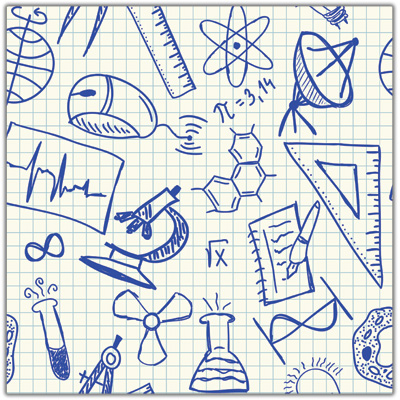Make the STEM connection | The Next Big Thing
 Sometimes I think that we forget that library science is itself a science. There’s no reason then why STEM shouldn’t be a natural part of our collections and our instruction. But where to get started?
Sometimes I think that we forget that library science is itself a science. There’s no reason then why STEM shouldn’t be a natural part of our collections and our instruction. But where to get started?
One way to start boosting your library’s support of STEM is to take a long, hard look at your science materials. Do you have books about the planet Pluto, dinosaurs called “brontosaurus,” or pretty much any dinosaur with a dragging tail? Titles on how to make a MySpace page? For most sciences, print materials typically have a shelf life of three to five years. With computer technologies, that’s more like three to five months.
With tight collection budgets, we have to get smart about how we buy materials. No more shelves full of “just in case” books, including guides on shells, birds, and trees. These, along with astronomy guides, rock identification manuals, and the rest of those little reference-type books, are easily replaced by a single computer with Internet access. Throw in a subscription to one of many available STEM database resources, and you’re more than covered.
A related collection development issue: consider one of the many book series about the lives of scientists and their work. Showing students, especially girls, the options for STEM-based careers is an important service we can perform.
Beyond offering material that shows women in STEM-based roles, we can do more to encourage students. Given the predominately female demographic of school and children’s librarians, there are opportunities to be role models. Show students the scientific aspects of library and information science. The cataloging and taxonomies that we work with are analogous to classification in biology.
As for computer technologies, our best bet is to keep leading and excelling in integrating technology into instruction. Earlier this year, the Alliance for Excellent Education released its report “Leading in and Beyond the Library,” documenting the importance of school librarians in technology implementation.
The study demonstrates for administrators that libraries are where the digital shift is happening in schools. Furthermore, “deeper learning and 21st-century competencies such as critical thinking, creativity, communication, and collaboration—the so-called 4 Cs—are also emphasized.” A critical aspect of digital integration is the shift from consumption to creation. The library, the report notes, is where students become authors and creators.
Students and the larger public can become creators in library maker spaces. As 3-D printers come down in price, more and more libraries will venture into the realm of making. For now, remember that the maker movement is about much more than 3-D printing. Consider a subscription to MAKE (makezine.com) as a way to engage student creativity. Or follow the example of the Grand Center Arts Academy in St. Louis, MO, where part of the library was transformed into a maker space.
Whether your first steps in STEM involve small changes in collection development or simply bringing to your administrator’s attention the report on libraries’ roles in digital implementation, the key point is to move forward. STEM is receiving a lot of attention, to the point of the creation of a White House office for STEM instruction. Why not take this great chance to highlight how libraries support and implement STEM?
RELATED
The job outlook in 2030: Librarians will be in demand
The job outlook in 2030: Librarians will be in demand
ALREADY A SUBSCRIBER? LOG IN
We are currently offering this content for free. Sign up now to activate your personal profile, where you can save articles for future viewing






Add Comment :-
Be the first reader to comment.
Comment Policy:
Comment should not be empty !!!